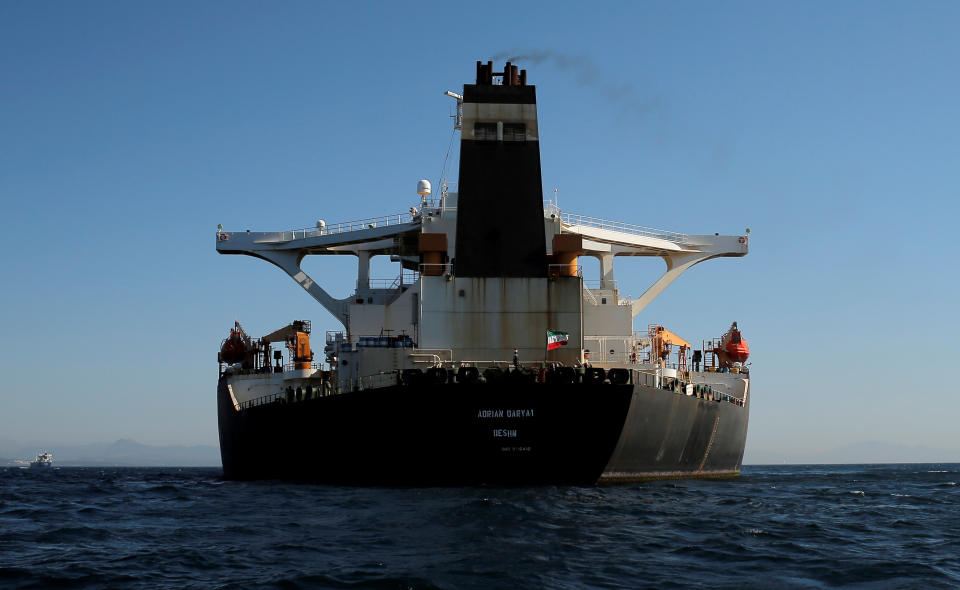Why traders playing oil like it’s 2010 are 'getting their heads handed to them'
Crude oil traders who bet on a major price surge after U.S.-Iran tensions flared last week ended up losing big as those tensions subsided.
Dan Dicker, a veteran energy trader and found of The Energy Word, tells Yahoo Finance that the prevalence of algorithmic trading today has made it that much more challenging for human traders.
Oil prices drop
Brent crude prices (BZ=F) posted a weekly decline of 5% Friday, settling at $64.98 per barrel and below levels from before the U.S. airstrike that took out Iranian general Qassem Soleimani on Jan. 3. Domestic West Texas intermediate (CL=F) posted a weekly decline of more than 6% to $59.04 a barrel, representing the largest weekly drop since July.
The declines more than reversed momentary spikes in both Brent and WTI crude prices last week, when concerns that Iran might retaliate with a hit to Middle East oil infrastructure sent investors scrambling to price in a supply risk premium.
But that quick reversal in price action may have been premature, according to Dicker.
“I think that traders ultimately may get bit in the backside because there’s such passivity to geopolitical risk,” Dicker told Yahoo Finance’s The Final Round. “I was biting my fingernails – maybe a lot of people were – that, you know, in fact, if there were casualties from the reprisal strike from the Iranians that Trump might, you know, puff his chest out and toss a bomb at Tehran and we’d be in the middle of, you know, a sector-wide war that involved more than just the U.S. and Iran.”
Instead, President Donald Trump announced Wednesday that he would be retaliating against Iran with sanctions, rather than escalating a military confrontation. The apparent easing of tensions with Iran sent oil prices down immediately.
“Just because, you know, a president comes out, you know, the next morning and says, ‘I’m not going to take a retaliatory move quite yet’ – I mean, all of a sudden oil drops $3.50,” Dicker said. “That, to me, is a tremendous change over the way that oil markets used to react to news like this even as much as five years ago and 10 years ago.”
‘They’re momentum seekers’
A key reason, Dicker said, boils down to who is – and is no longer – actually facilitating oil trades. Up until recently, “there were a lot more humans that were in the pipeline in terms of who was moving the markets, who was putting bets down, who was playing far out on the curve and who wasn’t,” he said.
But that dynamic has changed, and so too has oil price action in response to geopolitical shocks.
“Now we’re swamped by machines, and they’re momentum searchers. And ultimately, you know, when something comes out, no matter what the price is – whether it’s considered to be bullish news or bearish news – there seems to be a pile-on factor,” Dicker said.
“Instead of humans playing the market, there really are machines playing the market,” he added. “And yes, we’ve all had to become used to that, because those traders who have been playing the game as if it were, you know, 2010 or 2000 or 1995 have gotten their heads handed to them.”

“We’re all kind of forced into this very kind of passive kind of idea about oil prices being unmovable by geopolitics,” Dicker said.
That said, many economists have pointed out that this week’s earlier oil price spikes were also capped due to the perception that a Middle East supply shock would do less to hamper overall supply, given an existing supply glut and surging domestic production.
A similar phenomenon took place last September, when Brent crude oil prices spiked 15% – but then quickly receded – after a drone strike the U.S. blamed on Iran hit Saudi oil infrastructure and temporarily took out about 5% of global daily oil production.
“Now, if something would actually come out that would actually really put some supply at risk, you’d see markets spike in a way that you’d never see them spike before,” Dicker said.
“The machines are so far behind the curve when it comes to this that when some real momentum of real supply issues come up, you’re going to see them spike prices – not, you know, $10 or $7, but more like $25 or $30. And that would happen in only several days. That’s what you’re really looking at,” Dicker said.
—
Emily McCormick is a reporter for Yahoo Finance. Follow her on Twitter: @emily_mcck
Read more from Emily:
Here are the biggest stories that will drive the stock market in 2020
Stock market 2020: Most experts predict gains, some expect losses
Follow Yahoo Finance on Twitter, Facebook, Instagram, Flipboard, LinkedIn, and reddit.
Find live stock market quotes and the latest business and finance news